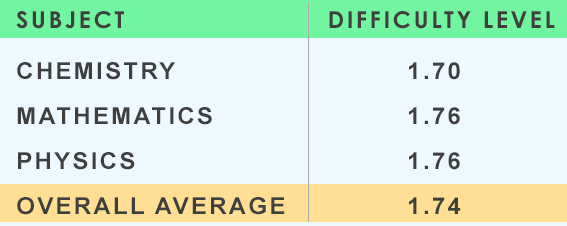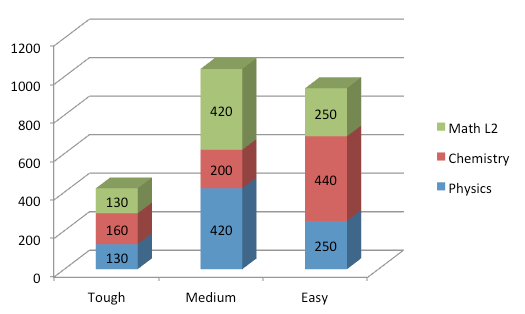Analysis of SAT Subject Test Paper – Physics, Chemistry & Math level 2 conducted on 6 May 2017
SAT Subjects test was conducted on 6 May 2016 on international centres all across GCC countries and South East Asia. It was very important for the students who wrote their grade 12 and are aiming to apply to NITs and other Centrally funded institutions in India. Many of the students are also applying to Best of the universities in USA, UK, Canada and Singapore. At least 30 % of the student who writes SAT subject tests were those who wrote their board exams in March 2017. The large portion of the students who wrote SAT subject tests on 6 May 2017, were those who migrated to Grade 12 in the Month of March 2017.
Ask all your queries and doubts by writing to [email protected] or give a call at + 91 8800123492
The paper pattern was same like the last SAT subject Test pattern.
In SAT Chemistry Subject Test on 6 May 2017, 85 questions were asked.
In Chemistry SAT Subject Test, the first 1 to 23 questions in Chemistry is "Classification" questions. Question number 24 to 38 are of "Relationship Analysis Type", and last 47 questions are of Standard Multiple Type Questions. In Chemistry SAT Subject Test, in Relational ship Analysis questions, the students have to analyze the relationship between 2 statements in order to see if the second statement correctly explains the first question.
In Fact, in Relationship Analysis Questions in Chemistry SAT subject Test require the student to identify the true value of two statements.
In SAT subject Test on 6 May 2017 in Physics section, as usual, 75 questions were to be done with 60 minutes.
The Physics SAT Subject Test is divided into 2 parts, Part A and part B.
In Physics SAT Subject Test, Part A consists of first 12 to 13 questions. It has four groups of 2 to 4 questions each. The questions with any one group relate to a single question within that group. The five possible answer choice is given before a question. The answer choice can be used once, or more than once, or not at all in each group.
Part B consists of last 62 to 63 questions. Each question has 5 possible answers, and some questions may be in a group of 2 to 3.
In SAT Math Level 2 on 6 May 2017, 50 questions were to be done within 60 minutes.
In Math SAT Subject Test, all 50 questions are of multiple choice with 5 options. The students receive 1 point of each correct answer and lose 1/ 4 for each wrong answer. The student receives 0 points for each unattempted question. For SAT Math Subject Test, the college board encourages the use of Graphing calculator over the Scientific calculator.
For SAT subject test on 6 May 2017, the students had to answer 210 questions within 180 minutes.
Based on taking with students, who appeared for SAT subject test on 6 May 2017, Testprepkart spoke with 30 students all across KSA, Bahrain, UAE, Kuwait, Qatar and Oman. Here is an analysis of the difficulty level of SAT subject test on 6 May 2017:

The testprepkart feels that all subjects were of similar difficulty level, but after speaking with the students, we came to know that Chemistry was tougher among all three subjects.
Question wise difficulty break up:

Score wise difficulty break up:

This analysis of SAT subject test conducted on 6 June is presented by testprepkart Academic Section.
For more information, write to [email protected], or call at + 91 8800123492

Leave a Reply